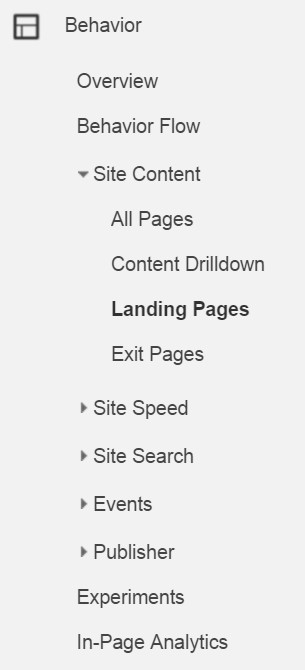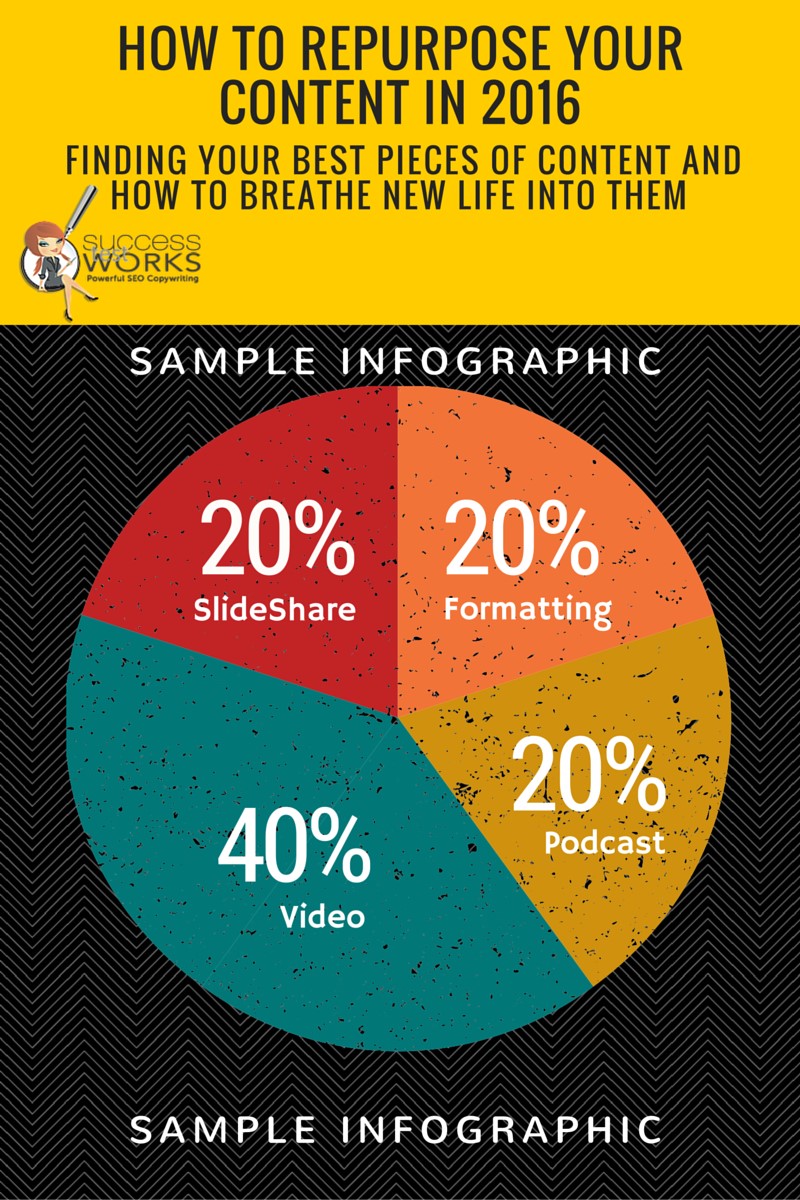Integrating Repurposed Content into Your 2016 Strategy
 With the flurry of the New Year behind us and the first quarter approaching its end, now is an opportune time to revisit our content plan for the year.
With the flurry of the New Year behind us and the first quarter approaching its end, now is an opportune time to revisit our content plan for the year.
We would all love to consistently publish content that readers adore, but that’s simply not realistic or attainable for most of us. But what if there were a way to produce content we know readers would love? And how could we find that out?
Easy. See what has worked to date and then recycle or repurpose it.
The quickest and surest way to find our most popular content is by looking at our analytics.
Finding Your Best Performing Content
Google Analytics is a powerful tool that is not always used to its full potential. If you’re just looking at Audience > Overview, then you’re missing a lot of the most revealing details.
In the left-hand navigation, look for Behavior. From there, click on Site Content, then Landing Pages. This will show you a list of all landing pages for the site, sorted by most to least visits.

You can further refine these results by clicking on +Add Segment and selecting Organic Sessions. As you remove the “All Sessions” segment, you will be left with only organic traffic data.
Choose the date range of January 1, 2015 – December 31, 2015. Google Analytics will now show you a list of the top organic landing pages on your site.
What to do with this information
Once we have the list of top URLs, we can further sort them by blog posts (those that contain /blog/ in the URL).
In the search box above the conversion data section of the Google Analytics chart (located to the top right), type “blog” (minus the quotes) into the search box and click the search icon:

This will provide us will all of our blog content. From this data, we can see which posts have had the most organic activity and then recycle that content in another blog post or repurpose it for different content formats.
Repurposing Your Content
Regardless of your niche, there is a lot of competition. The goal is, or should be, to stand out and be helpful. Repurposing your existing content in different formats will help to achieve that.
Now that you know which pieces of your content perform well, it’s time to see how we can reinvent them.
Reformat Content
Review each blog post. Are there any similarities among them? Formatting is important because it determines how a user will digest the information.
Suppose that the content provided is the best available and answers all questions completely. When reading it however, it’s single spaced and has no images. Chances are this page will not gain much visibility.
To ensure each post is scannable and visually appealing, make sure it has the following:
- Images that correspond with the content
- Bullet points for easy to read steps
- Header tags to guide the eye and organize content into focused chunks
- Internal and external links to create increased value and convenience for the user
If one of your high-performing posts from 2015 is missing one or more of these elements, consider revising and reposting it using this formatting checklist.
Leverage SlideShare
Aside from your blog, there are many other ways to reach your potential audience. For example, SlideShare is a great way to repurpose your content in a quick and easily digestable format. The LinkedIn-owned website allows people to upload or create slides on any topic. The presentation can then be shared on social media sites or embedded in blog posts, like this:
How to repurpose your content in 2016 by Joseph Rega
Add Infographics
By now we have all seen an infographic on one topic or another. Infographics are a great way to visually represent the data you wish to present. They are very popular and shared frequently.

Add the infographic to the post you’re pulling the content from and be sure to include social icons. This will make it easier for users to directly share your content.
Create Videos
Video continues to increase in popularity and will be an essential part of content marketing strategy in 2016. With video, you can have someone from your company, or your client’s company, discuss the topics covered in the blog post you’re repurposing. For example:
After the video has been recorded (and edited) it can be uploaded to YouTube with a link back to the post via the video description. The video can also be embedded in the blog post as a way to enrich the content.
Produce Podcasts
Podcasts are a great way to gain more exposure for your brand. A podcast will allow you to explore your topic deeper by allowing you (and your guest) the freedom to talk through different scenarios.
Like videos, podcasts can also be embedded in the blog post you’re discussing. Adding new media to the page may reduce the bounce rate since you’re providing users with more reasons to stick around.
Podcasts can also be used to link back to your website via the description on the platform, similar to YouTube.
Summing Up
It is important to pay close attention to your best performing content as this is what uses are looking for. Give them what they want and they will keep coming back.
Some ways to repurpose your best content are:
- Formatting
- Creating a SlideShare presentation
- Creating an infographic
- Making a video on the topic
- Recording a podcast on the subject
You can choose any or all of these methods to breathe new life into your old, high-performing content.
If you have been successful with any other methods of repurposing your content, we would love to hear about them! Please share them in the comments.
Connect with Joe on Twitter, LinkedIn and Google+
Image thanks: Pixabay.com











I definitely don’t think there’s anything with reusing old content, especially if you present it in a new format. It’d be a shame to let great content essentially “disappear” just because it was posted a long time ago. You’ve surely established a large following since you posted that post you made a year ago, and I’m sure those new followers would love to see the content that post contains too :)
I’ll have to look back through my blog and see what’s been working for me in the past, and then come up with ways to use it, or get ideas from it to create some killer content going forward. Thank you!
I did the same for many of contents and got really good results. I used MS PP 2010 and create the PowerPoint, video as well as the PDF. And I use Photoshop to create images and for some contents I used Canva too. Content re-purposing really works, it generates relevant and targeted traffic to the main site/page from different channels. And it helps in acquiring back-links too. I really liked this post.
Hi Joe, great post.
Repurposing content is one of the things I need to concentrate on. Particularly transforming my top performing content into slides, infographics, and videos. Probably re-posting on syndication sites like LinkedIn and Medium can also be considered as repurposing.
Best.
Hey Joe,
Great post indeed!
Popcast is a great way to revive old posts. Nowadays, I preparing to create infographics for the top performing content on my website.
An other way for reviving old content could also be using Buffer. It’s a great for automated sharing of posts.
Thanks Joe for sharing this amazing post! :)